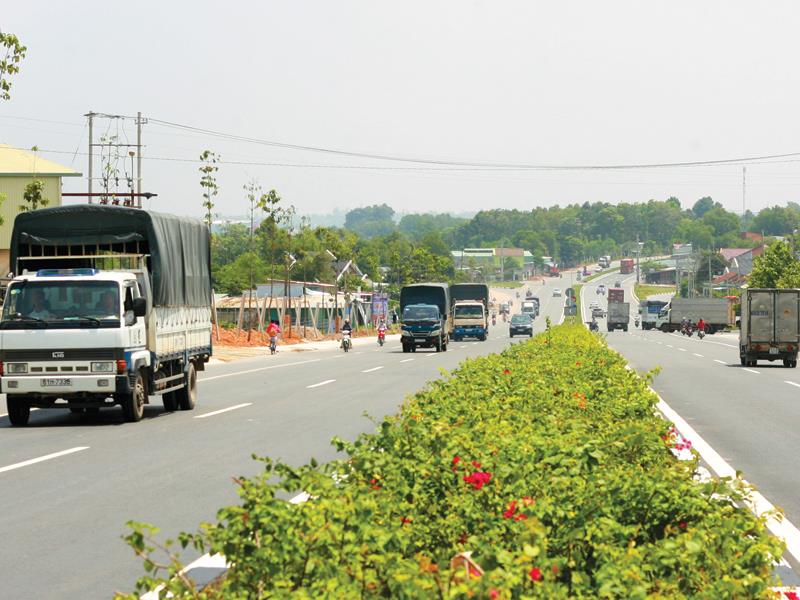Ministry seeking to boost PPP projects
 |
The project involves component 1B of the 34 km Tan Van-Nhon Trach section of Ho Chi Minh City’s Belt Road No 3. The section is a major gateway with huge traffic volumes to the major south-eastern economic zone.
Accordingly, to appeal to international investors, the Ministry of Transport (MoT) proposed the Prime Minister a guarantee mechanism over the project revenue.
By this design, if the project revenue falls below 80 per cent of the estimates, the difference will be offset through two options:
First, the government can form a provisional fund to be available to help the project enterprise pay debts. This sum would later be refunded when the project turns profitable.
Second, an authorised government agency will select a financial institution to provide payment guarantee to the project lender in case of a revenue decrease.
The government will bear part of the guarantee fees to the underwriting organisation.
In case the payment guarantee takes effect, the Vietnamese government will become the payer.
According to Deputy Minister of Transport Nguyen Ngoc Dong, since traffic volume estimations were carefully checked by the project’s consultancy unit, a possible revenue decrease is unlikely, and if this happened, reduction levels would be insignificant.
Besides revenue guarantee, the MoT asked the government to help the project investor mitigate risks associated with foreign currency exchange (not including exchange rate guarantee).
The request was made because investors often face difficulties in converting their profits from Vietnam dong into US dollars or other currencies, a cost growing in direct proportion to foreign loans taken up.
“This will help bolster investor’s confidence in project execution,” Dong said.
If the proposal is green-lighted, the MoT will make it into concrete regulations embedded into BOT contract drafts attached to tender invitation records.
“In the context of finite medium-term public investment sources currently available, the unprecedented measures proposed by the MoT might just prove reasonable,” a senior transport expert commented.
Component 1B is one of the few public private partnership (PPP) infrastructure projects looking for investors through a bidding process.
State-owned Cuu Long Transport Infrastructure Management, Investment and Development Corporation (CPIM Cuu Long), which represents the MoT, has reported that it could only sell six tender invitation records to Korean and Vietnamese investors.
The outcome was a surprise, as component 1B had previously drawn particular attention from investors, due to its importance and relatively low investment scope of about VND4 trillion ($182 million).
According to the MoT, the investors said they did not participate in the project because of too many risks involved and that the current implementation mechanism did not match international practices.
Besides, they were disappointed when the invitation documents did not have a clause providing guarantee in case of early contract termination or covering the risks associated with exchange rate volatility.
This explains why the MoT was seeking the government’s approval for a pilot implementation of the project’s risk-sharing scheme.
After the successful implementation of this pilot project, relevant ministries and sectors will study the concrete outcomes of relevant policies and mechanisms with a view to improving the regulatory system to spur PPP project implementation.
“In case this scheme is not piloted, the government should consider a specific credit package for infrastructure investment, or directly borrowing, investing, and then leasing out the right for toll collection (BLT format). This is crucial for the success of PPP projects,” said the MoT executive.
What the stars mean:
★ Poor ★ ★ Promising ★★★ Good ★★★★ Very good ★★★★★ Exceptional
Latest News
More News
- Kolon signs $48 million airbag supply deal with Autoliv (December 15, 2025 | 18:14)
- National Assembly approves Vinh–Thanh Thuy expressway project (December 15, 2025 | 18:02)
- Quang Tri green-lights $1.59 billion LNG-fired power project (December 15, 2025 | 17:59)
- Stress laid on high-quality FDI inflows (December 15, 2025 | 11:00)
- Can Tho utilises its growth advantages (December 15, 2025 | 09:09)
- Ca Mau unlocking potential to shape a more sustainable future (December 15, 2025 | 09:02)
- Major projects to be inaugurated nationwide (December 15, 2025 | 08:00)
- MoF workshop highlights mounting concerns over ODA on-lending costs (December 12, 2025 | 16:05)
- National Assembly approves pilot mechanisms to accelerate major projects in Hanoi (December 12, 2025 | 11:29)
- Legislation gives government flexibility for loan guarantees (December 11, 2025 | 18:04)


















 Mobile Version
Mobile Version